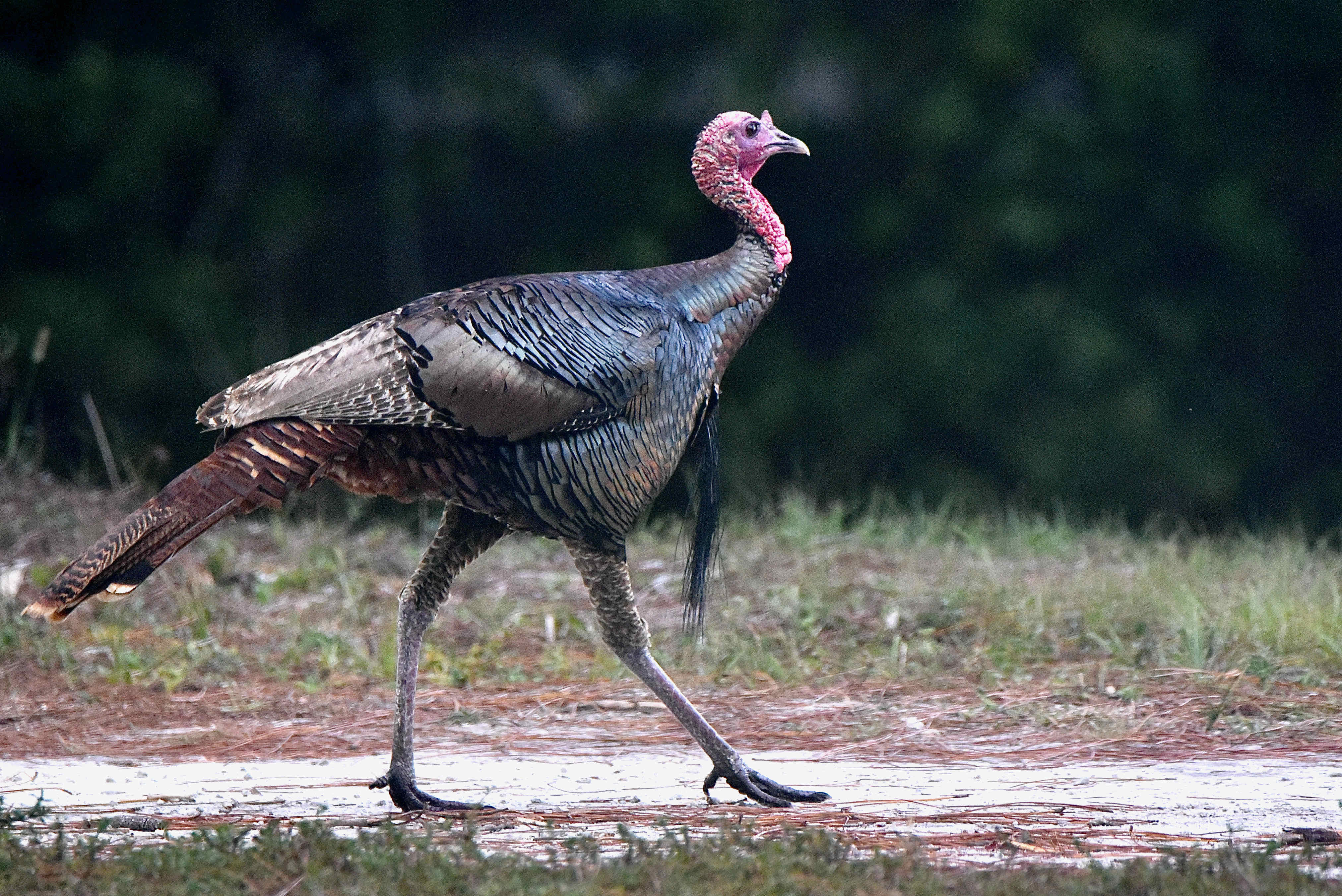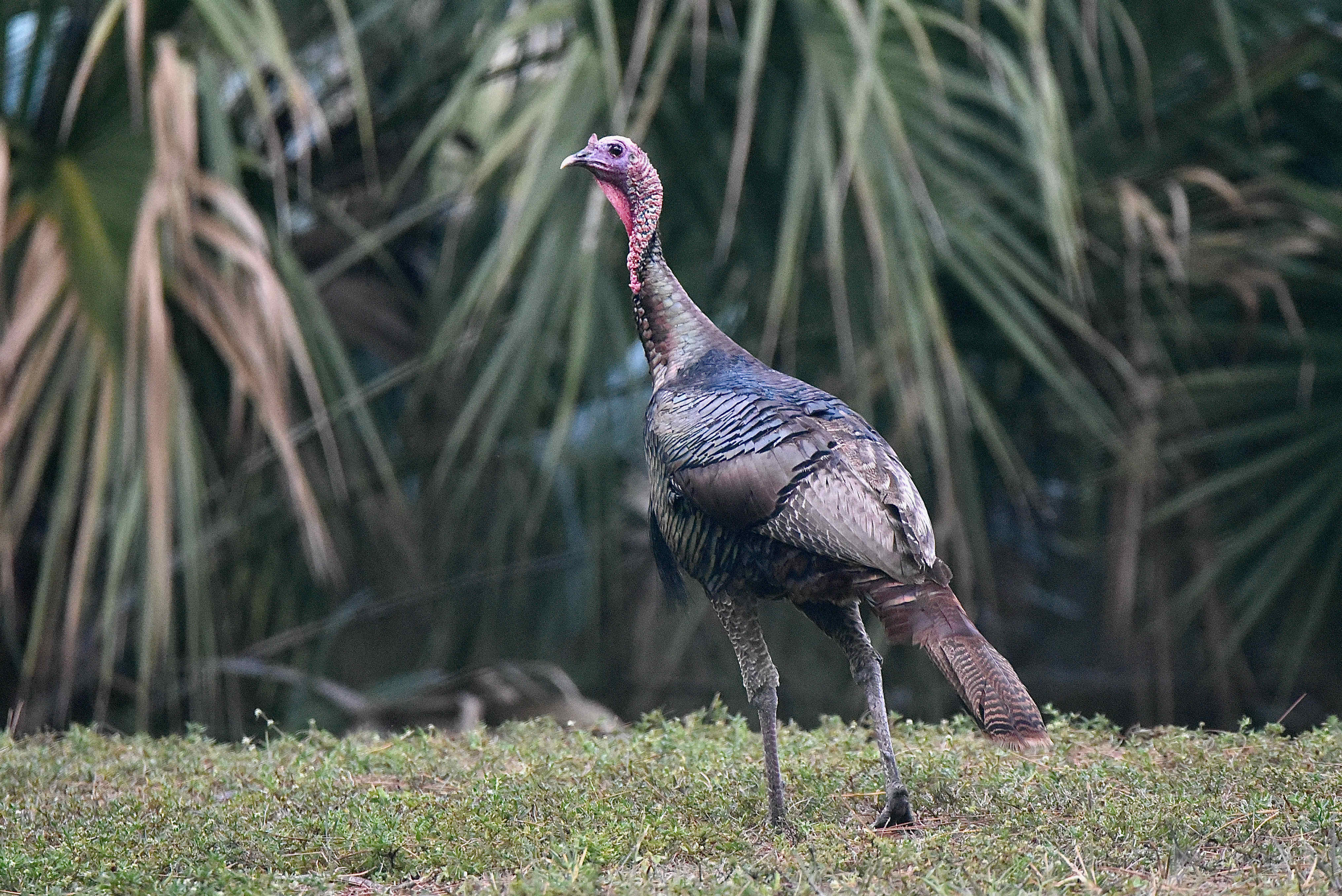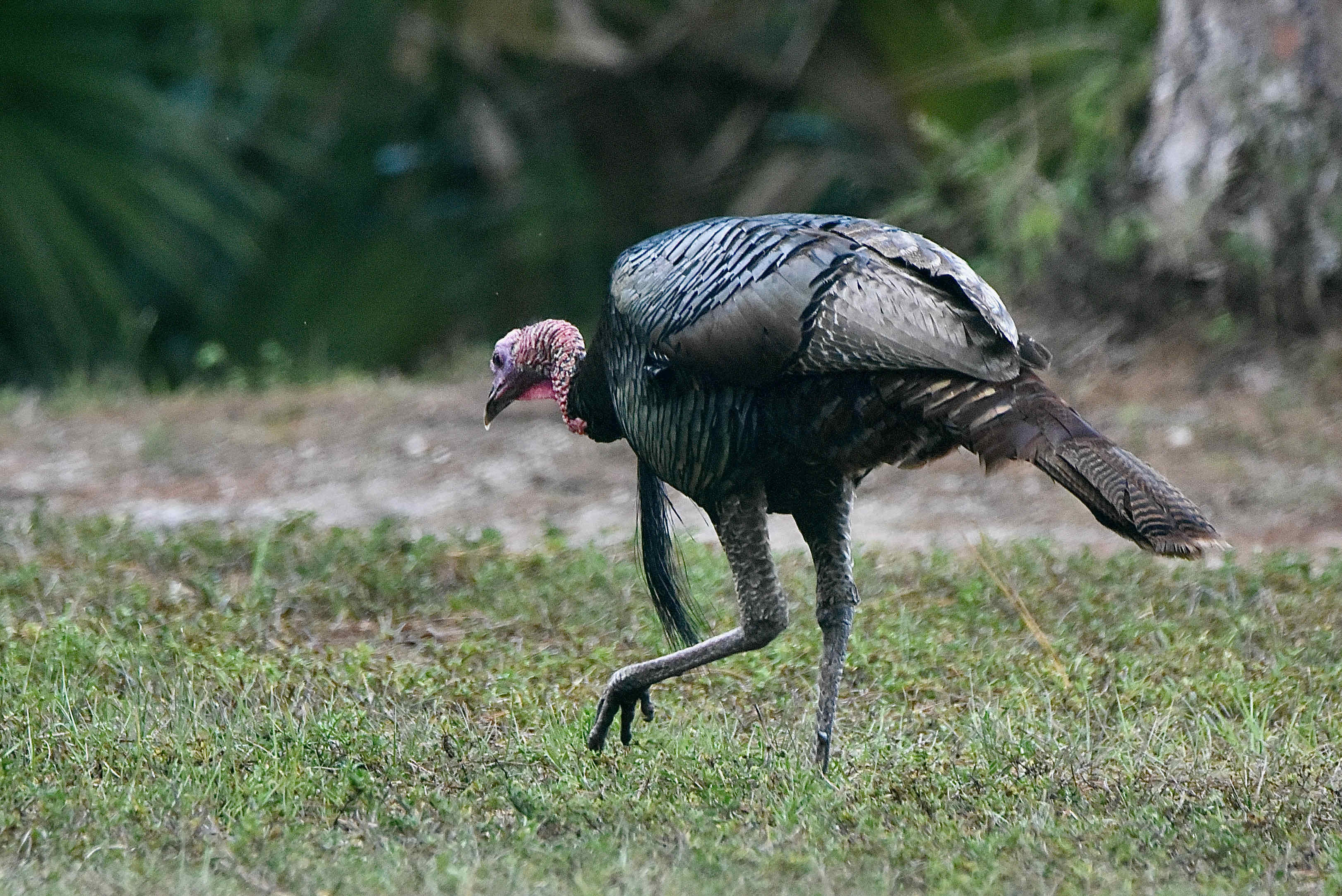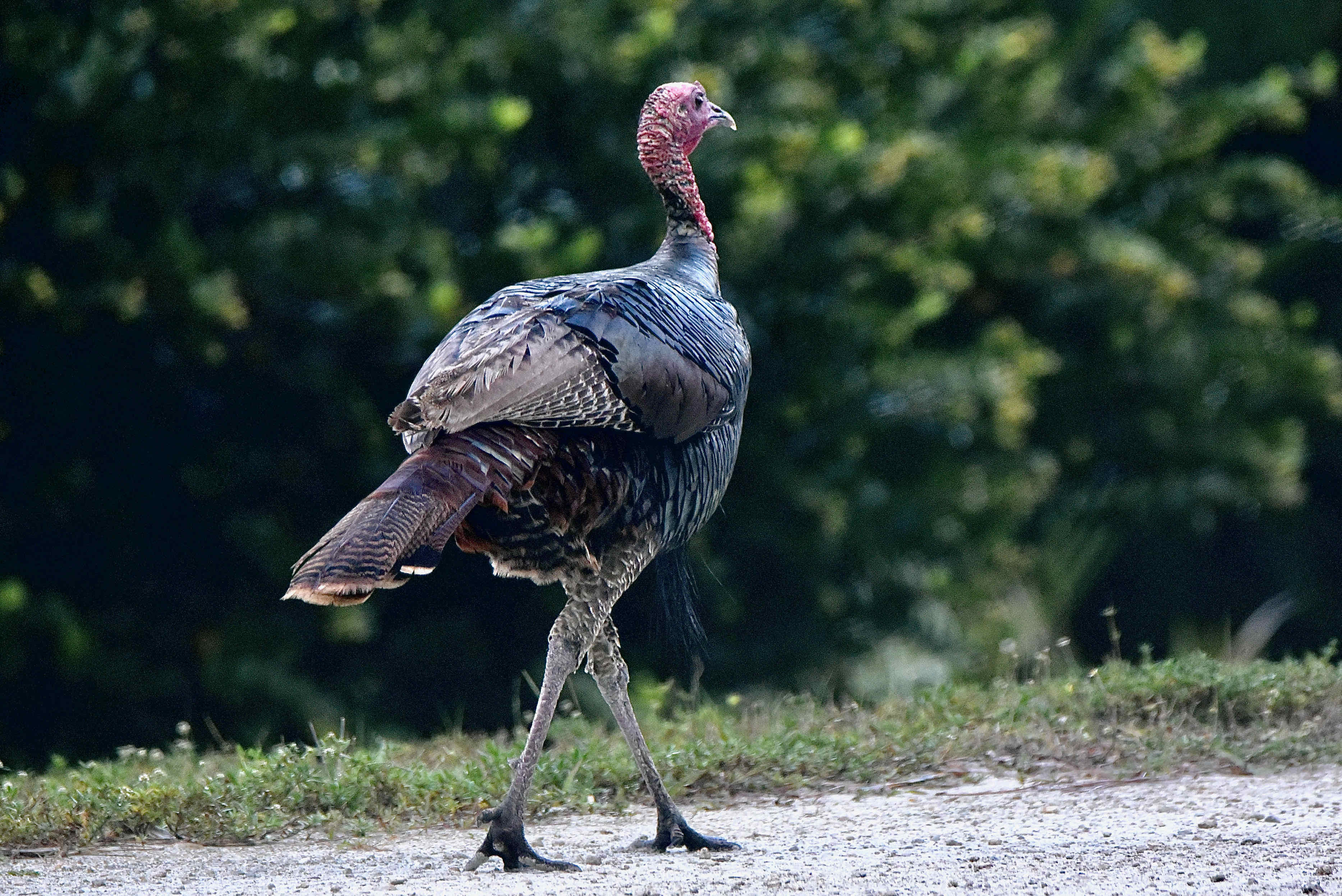
Wild turkey, photographed at Riverbend County Park, Jupiter, Palm Beach County, in June 2021.
The wild turkey, Meleagris gallopavo, ain’t no turkey. It’s big. It’s powerful. It’s beautiful. It’s wary and it's a strong flyer, capable of hitting speeds as fast as 55 mph.
In short, the wild turkey is nothing at all like the domesticated bird we eat at Thanksgiving, which has been bred for the table over centuries at the expense of the qualities that made Benjamin Franklin ponder choosing it over the bald eagle as our national symbol. (Franklin really didn’t like the eagle.)
Florida is blessed to have two different varieties of turkey, the eastern wild, which dominates the northern tier of counties, and the Osceola, which is found only in Florida and named after the great Seminole chief. Its range includes central and South Florida. In our neck of the woods, it’s found in Martin County and northern Palm Beach County, as well as Lee and Collier, but absent from Broward, Miami-Dade and Monroe. The Long Pine Key area of what is now Everglades National Park was once part of the wild turkey's range, but logging and hunting killed off the population by the early 1900s. Attempts have been made to reintroduce it to the park with mixed success.
In fact, the wild turkey population as a whole was eliminated from much of its natural range by the early 1900s. By some estimates, the wild turkey population had declined by 90 percent. In Florida, the Osceolas bottomed out at about 25,000, hiding deep in swamps and other places where hunters and loggers couldn't get to them. Because of conservation measures instituted in the '40s, '50s and '60s the population rebounded to more than 100,000. Wild turkeys can be found in every state except Alaska.
As we said, they are big birds, with a body length between 43 and 45 inches, and with a wingspan of nearly five feet. They’re a mix of browns and blacks and whites, instantly recognizable by even the youngest of children who've been taught the Thanksgiving story in school. Males are larger, heavier-bodied than females, sport a “beard” and have facial skin covered in red, warty growths called caruncles. Females have a blue face, lack the red caruncles and usually lack the beard.
It can be difficult to differentiate an eastern wild turkey from an Osceola wild turkey, even for experts, but Osceolas are generally smaller — more streamlined in appearance — and darker than their counterparts. (The eastern has more white barring in its wing feathers than the Osceola, which accounts for the lighter look.)
Wild turkeys like forested areas with scattered open ground — hardwood swamps and hammocks, cypress swamps and flatwoods. During nesting season — which, in Florida, runs from March into May — they take to places with low, dense vegetation — stands of saw palmetto, for example — where females scrape out a shallow hole covered in leaves, grasses and sticks, and lay their eggs. Clutches are typically 9 to 11 eggs, but can be as many as 20, laid one per day. They require 25 or 26 days of incubation before hatching. Females on occasion will “dump” eggs in the nest of another.
Chicks are mobile and able to feed themselves immediately after hatching; they can make short flights a week or two later, and can make it into the low branches of trees for roosting at four weeks. Until then, they roost on the ground under mom’s wings or tail.
Males play no role in rearing the young, and may mate with more than one female during the spring season. To attract the opposite sex, they fan their tail feathers, strut about and gobble. Their faces turn bright blue and and white, and the caruncles swell and become bright red.
More turkey basics: they roost in trees. As noted above, turkeys are more than capable flyers, able to take to the air when threatened or to find a tree in which to spend the night safe from predators. Females tend to fly more when threatened, males tend to run more as their mode of fleeing danger. Turkeys can cover several hundred acres a day while walking and foraging.
Turkeys are omnivores. They’ll eat seeds, nuts and fruit, but they’ll also eat insects and small vertebrates.
They are social birds, for the most part, but segregate by sex outside of mating season, males in their own flocks and females in theirs, accompanied by youngsters, and frequently in mixed family groups. Males and female groups have their own pecking orders, or hierarchies, which change frequently among males but tend to be stable among females.
Adult males are called toms or gobblers; adult females are called hens. A juvenile male is a jake and juvenile female is a jenny. Chicks are called poults. Turkeys take their adult form at two years.
There are six recognized subspecies of wild turkeys, including the Osceola and the eastern, divided by geography. One of the subspecies, called the Mexican, or M g gallopavo in scientific parlance, is believed to be extinct. However, it's this subspecies from which all domesticated turkeys descend.
There are two species of turkeys in the world, our guy, which is found over most North America as far north as southern Canada and as far south as central Mexico, and the oscellated turkey, M. oscellata, found in Mexico and Central America.
Turkeys are one of two birds native to North America that have been domesticated, the other being the Muscovy duck. Native Americans had domesticated the turkey centuries before the arrival of the Spanish in the 1500s. The first turkeys that made it to Europe were bought probably from the Aztecs by the Spanish and shipped to the Old World via Turkey the country, hence the name of the bird. At least that’s the story. (Turks believed the birds originated in India and called them hindis.) The rest is Thanksgiving (and Christmas) history.
Side note: Henry VIII is credited by some for popularizing the turkey in England as a bird fit for a holiday feast, displacing the peacock (Indian pea fowl) as the royal Christmas favorite. He’s also often depicted in popular culture eating what appears to be a big ole’ turkey leg. Others argue there’s a hole in the story: Henry died three years before the first turkeys were imported into England in 1550. However, according to the UK’s Game and Wildlife Conservation Trust, the bird was brought to England in 1526 by one William Strickland, who supposedly made a fortune in the turkey trade. (Strickland’s family crest includes a turkey. Really.) So who knows? Maybe it was Henry who offed the head of a Christmas turkey.
Now back to the science: Turkeys are members of Phasianidae, the family of pheasants.
Riverbend County Park



